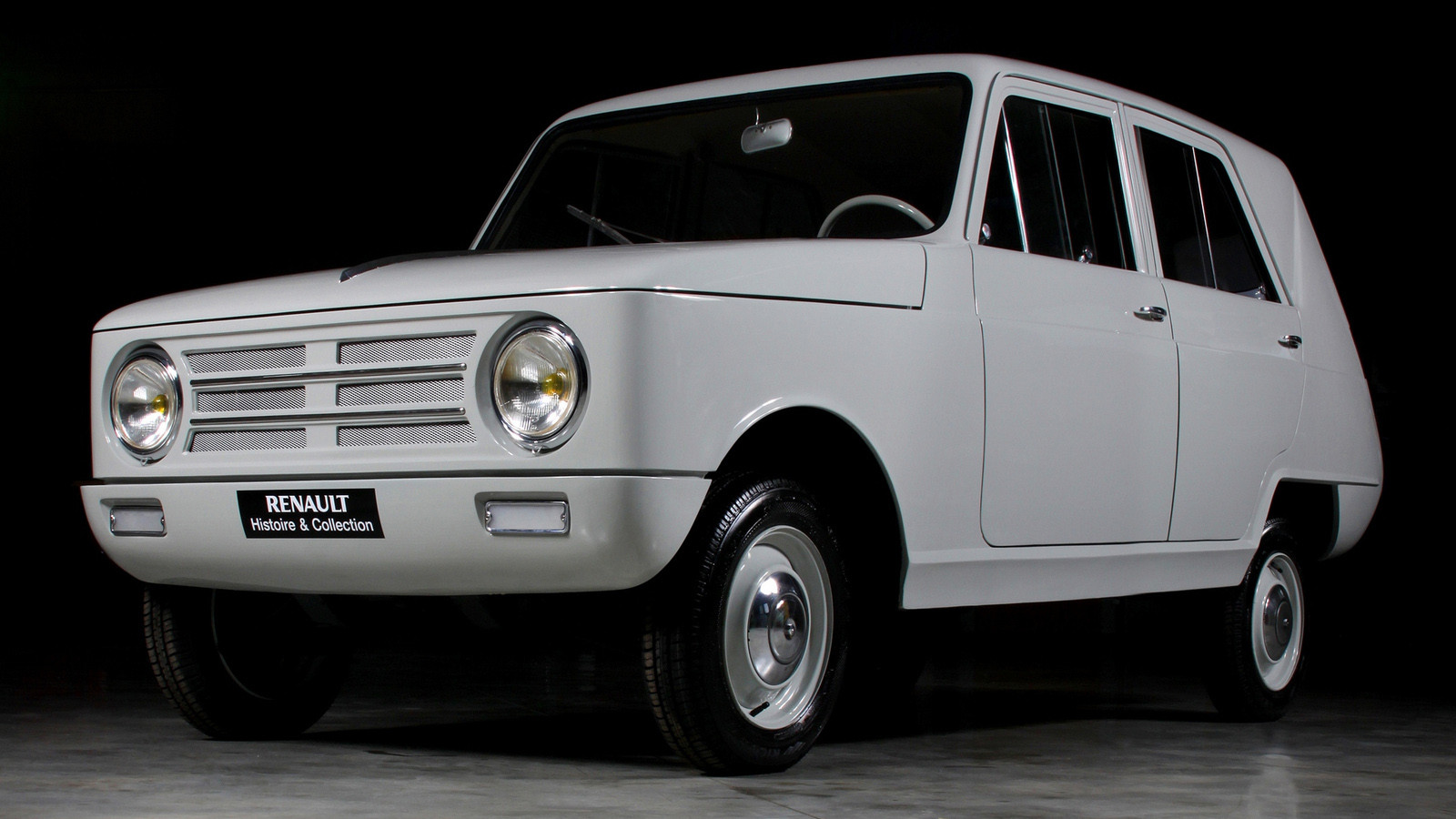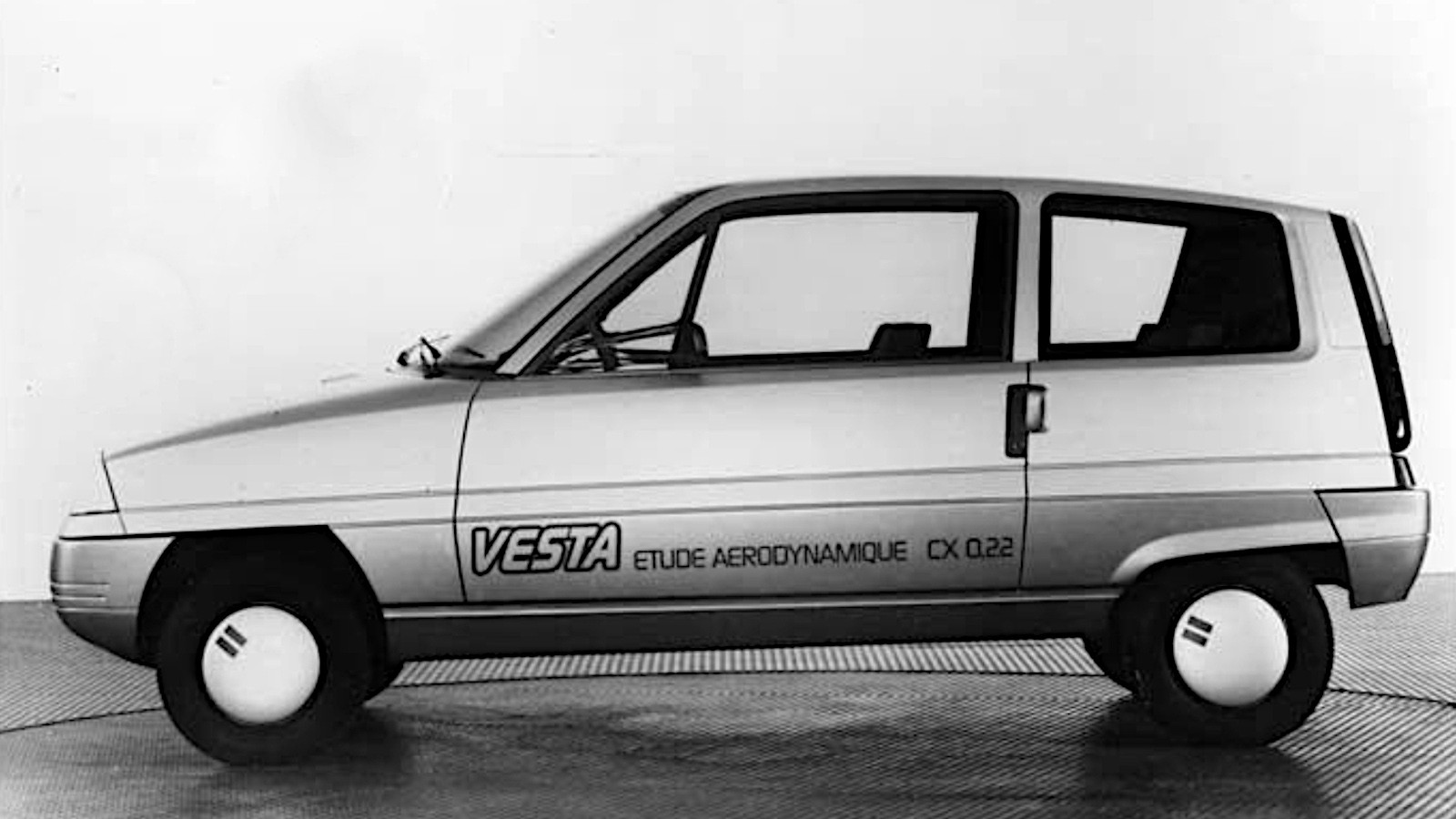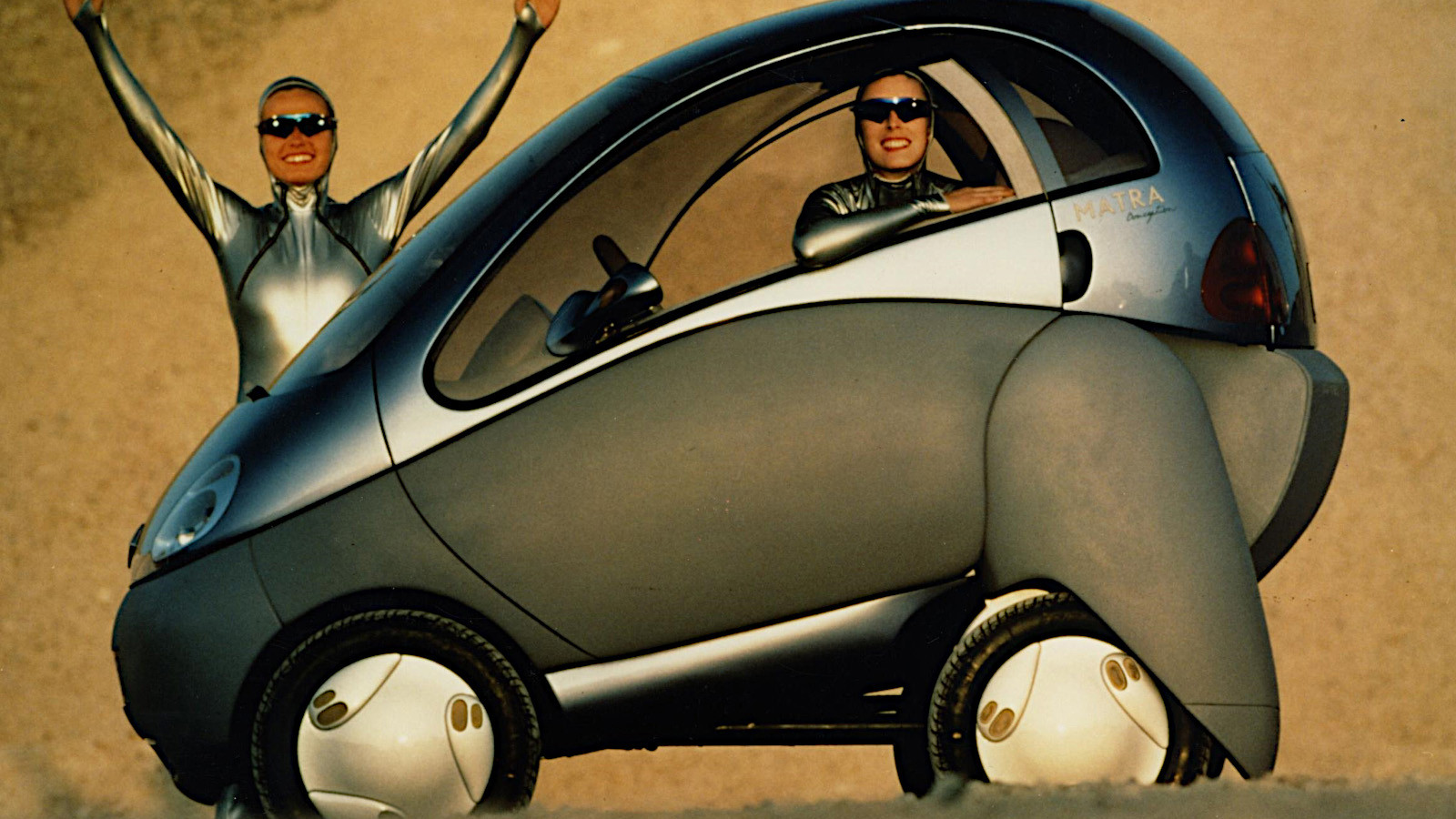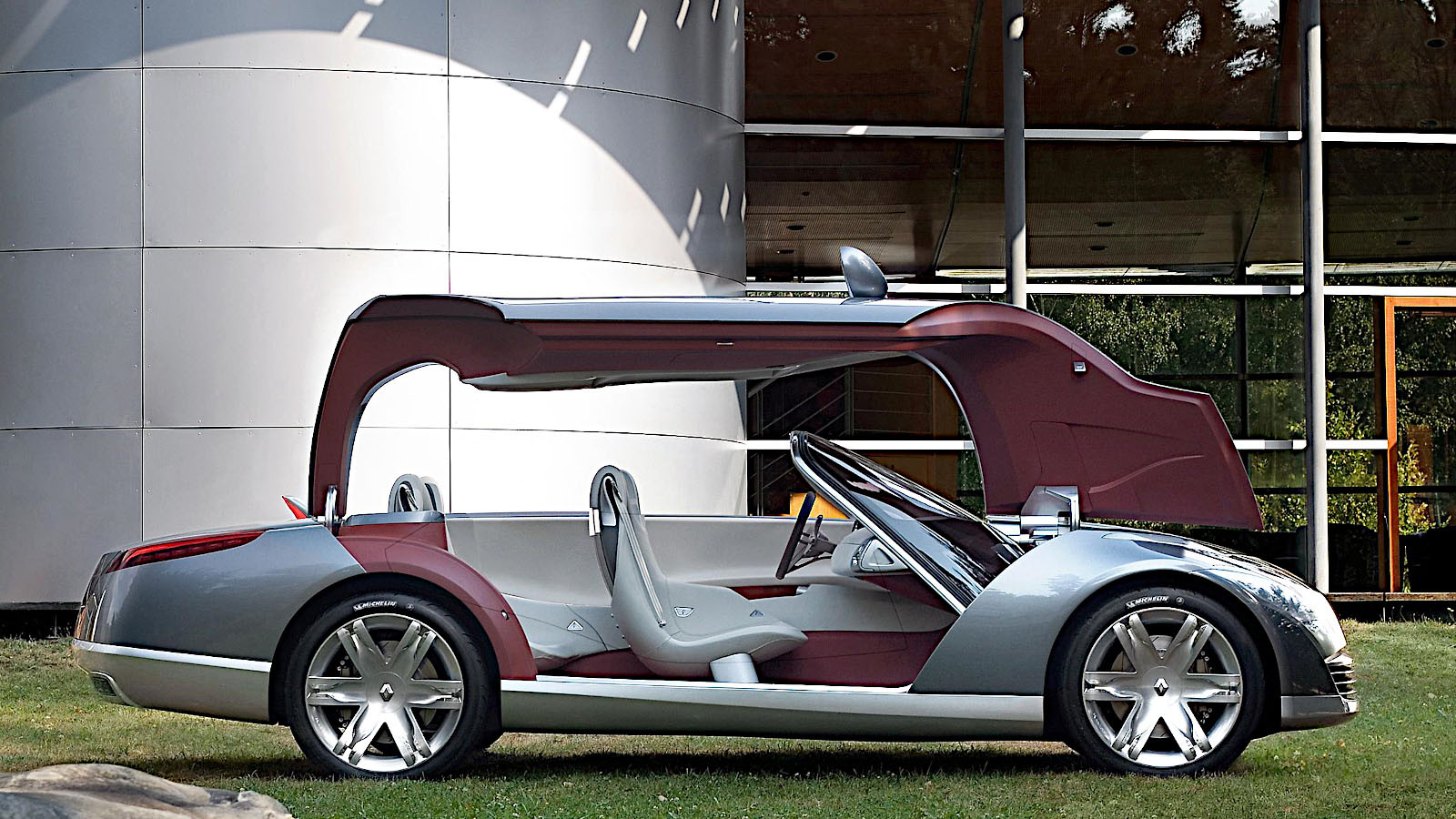-
 © Renault
© Renault -
 © Renault
© Renault -
 © Andrew Bone/Creative Commons licence https://creativecommons.org/licenses/by/2.0/legalcode.en
© Andrew Bone/Creative Commons licence https://creativecommons.org/licenses/by/2.0/legalcode.en -
 © Renault
© Renault -
 © Thesupermat/Creative Commons licence https://creativecommons.org/licenses/by-sa/3.0/legalcode.en
© Thesupermat/Creative Commons licence https://creativecommons.org/licenses/by-sa/3.0/legalcode.en -
 © Renault
© Renault -
 © Renault
© Renault -
 © Renault
© Renault -
 © Renault
© Renault -
 © Renault
© Renault -
 © Renault
© Renault -
 © Renault
© Renault -
 © Renault
© Renault -
 © Renault
© Renault -
 © Renault
© Renault -
 © Renault
© Renault -
 © Renault
© Renault -
 © Renault
© Renault -
 © Renault
© Renault -
 © Renault
© Renault -
 © Renault
© Renault -
 © Renault
© Renault -
 © Renault
© Renault -
 © Renault
© Renault -
 © Renault
© Renault
-
The almost-Renaults
Younger than Peugeot but older than Citroën, Renault is the middle of the three major French automobile manufacturers in terms of age, having been founded in 1899.
It has produced a great many models since then, and of course most of them have gone on sale to the public, otherwise Renault would have been a very minor French manufacturer.
Several, however, were never put into production for one reason or another, and we’ll be looking at 24 of those here, in chronological order.
Everything in this list was built before 2010, and we’re ignoring Grand Prix and other competition cars, but including record breakers.
-
1. Renault 40CV des Records (1926)
The 40CV, perhaps the grandest car Renault has ever made, was a luxury model produced from 1911 to 1928.
The des Records version was very different from the standard model, with a tuned version of the 9.1-liter straight-six engine, a narrow chassis and an aerodynamic, single-seater body.
In February 1926, it set new speed records for 100km and 500km at the Linas-Montlhéry autodrome near Paris, and returned later that year to do the same thing over distances of up to 4000km.
It also completed a 24-hour run at an average of nearly 108mph, a phenomenal achievement for the time.
-
2. Renault Project 108 (1948)
Renault had only just put its first post-war model, the 4CV, on the market when it built Project 108.
This was a study for a significantly larger car, and like the 4CV (and indeed several of its successors) it was rear-engined.
That idea was soon abandoned, and the Frégate introduced in 1951 had the more conventional arrangement of an engine in the front driving the rear wheels.
-
3. Renault Étoile Filante (1956)
The Étoile Filante (French for ‘shooting star’) was a streamliner constructed by Renault and powered by a 270HP Turbomeca turbine engine.
In September 1956, it was taken to the Bonneville Salt Flats in Utah, where Jean Hébert drove it through both a flying mile at an average of 191.2mph and a flying kilometer at 190.7mph.
As of 2024, both records still stand.
-
4. Renault Project 900 (1959)
Similar in concept to the Project 600 built three years earlier, the mid-engined Project 900 had an extreme example of a ‘cab forward’ design, with the driver and front passenger sitting well ahead of the front wheels.
The design was so outlandish that it’s difficult to tell, from side on, which way the car is pointing, though it’s less unsettling when viewed from either end, resembling the later Renault 10 sedan at the front and the Floride/Caravelle sports car at the back.
Perhaps appropriately, the engine was also very unusual.
Created by Amedée Gordini, but never used in a production vehicle, it was essentially two 845cc Billancourt units (as already fitted to the Dauphine and later to be used in the Renault 4) combined to make a 1.7-liter V8.
-
5. Renault CX15 (1962)
Concept cars often look futuristic, but even so it’s difficult to believe that the CX15 was built more than 60 years ago.
It looks outstandingly more modern than the Renault 4, even though that car was introduced only the previous year.
Part of the reason is that manufacturers did not then pay much attention to aerodynamics, at least by today’s standards, when designing production cars.
The CX15, on the other hand, was developed purely in the interests of aerodynamic research, the results of which were not apparent in anything built for many years afterwards.
-
6. Renault Project 118 (1965)
Very much unlike the CX15, the Project 118 bears some resemblance to the Renault 4, and was indeed based on it.
The idea was to expand the Renault range by introducing something similar to the very popular 4, but slightly larger.
Unlike the last two we looked at, this concept did lead directly to a production model, namely the Renault 6, which was launched in 1968.
-
7. Renault Vesta (1983)
Vesta is an acronym for Véhicule Économe de Systèmes et Technolgies Avancés, or ‘economic vehicle of advanced systems and technologies’.
It was created in response to the French Ministry of Industry, which asked manufacturers to build prototype cars with gas mileage of 94.2mpg or better.
Of the three Vestas, the original version looked reasonably conventional, and reminiscent of the Renault 5, though as we’ll see that policy would change as the company attempted to achieve even better economy
-
8. Renault Vesta 2 (1987)
Despite its name, the Renault Vesta 2 was the third of the Vesta concepts, following on from the Vesta +.
Insistence on the greatest possible aerodynamic efficiency led to this one looking nearly as odd as the CX15 of 25 years before, and almost certainly meant that nobody would have bought one if Renault had put it into production.
The gas mileage goal, however, was not just reached, but vastly exceeded.
Rather than the officially suggested 94.2mpg, Renault claimed that the Vesta 2 used fuel at the incredibly low rate of 145.6mpg.
-
9. Renault Laguna Roadster (1990)
This concept had nothing whatsoever to do with the first-generation Laguna which went into production three years later.
Instead, the name was used in this case for a two-seat roadster concept quite unlike anything Renault had ever offered to the public in an existence which had by now lasted for nearly a century.
The Laguna never went into production, but it did foreshadow the equally unconventional mid-engined Renault Spider launched in 1996.
-
10. Renault Scenic (1991)
In the early days, minivans, or ‘people carriers’ as they were informally known, were large vehicles, similar in size to vans.
With the Scenic concept, Renault put forward the idea that a more compact type of minivan was also possible, and would of course be cheaper and therefore accessible to more customers.
Although the styling was fairly conventional, the Scenic was quite adventurous in other ways, with sliding doors and four-wheel drive.
Those features did not make it to the Megane Scenic which went into production in 1996, though that car’s combination of modest exterior dimensions and plentiful interior space made it very popular.
-
11. Renault Racoon (1992)
Sometimes manufacturers produce, apparently for little more than their own amusement, concept cars which don’t have a hope of making it to production.
This was certainly the case with the Racoon, described by Renault as ‘aquatic-capable’ and powered by a twin-turbocharged V6 engine driving all four wheels.
There were no conventional doors (access was via a front canopy instead), and the specification also included variable ride height, rain-diffusing glass, remote-controlled entry, satellite navigation and rear-view cameras.
Today, those things are no longer surprising, but back in 1992 they verged on science fiction.
-
12. Renault Reinastella (1992)
One of the very few cars capable of making the Racoon seem as normal as rice pudding was another Renault concept revealed in the same year, this one created for an exhibition at Disneyland Paris.
According to an official back story which is difficult to relate without getting the tenses mixed up, the Reinastella was, or will be, built in 2328, 400 years after the unveiling of Renault’s luxury car of the same name.
The 24th-century version could transport up to five people 150 meters above the ground at more than 180mph thanks to its powerful but silent bio engine.
In a rumored testing accident, a prototype was believed to have absorbed the bodies of its passengers, after which Renault modified the structure ‘to make it incompatible with a mammal and thus avoid any phenomenon of assimilation’.
-
13. Renault Zoom (1992)
In the exceptionally productive year of 1992, Renault revealed a third concept much closer to a realistic production vehicle than the Racoon or the Reinastella.
The Zoom was a two-seat electric city car which normally measured 2.65 meters from front to back, but this could, as shown here, be reduced to 2.3 meters by moving the rear axle forward.
The 61HP motor gave the little machine a 0-62mph time of under 6 secs, and the urban range was 90 miles.
Co-developed by Matra, the Zoom wasn’t taken any further, but Renault did come up with something not unlike it 20 years later in the form of the Twizy electric quadricycle.
-
14. Renault Argos (1994)
Presented at the 1994 Geneva motor show, the Renault Argos was another two-seat roadster concept with no roof or windshield, not unlike the Laguna Roadster seen four years earlier.
The doors opened by sliding backwards into the rear fenders, and gearchanging was performed electronically via a small lever which sent commands to actuators in the transmission.
It’s tempting to see the Argos as a precursor to the Spider, but it also previewed the styling of the second-generation Clio launched in 1998.
-
15. Renault Espace F1 (1995)
Renault celebrated the 10th anniversary of the Espace minivan by collaborating with Williams to produce by far the fastest version ever built.
At the time, Renault was supplying the Williams Grand Prix team with 3.5-liter V10 engines, and one of these was fitted to the concept’s carbonfiber chassis, which carried a carbonfiber-reinforced body vaguely similar to that of the standard model.
With a power output of around 800HP, the Espace F1 was extraordinarily fast, if not quite as practical as its more restrained siblings.
It was demonstrated, but never raced (there being no category for it to compete in) and was certainly never used on public roads.
-
16. Renault Initiale (1995)
Like the Espace F1, the Initiale was powered by Renault’s V10 Grand Prix engine, though in this case it was substantially detuned.
It drove all four wheels of a proposed luxury model which even came with luggage created by Louis Vuitton.
According to Renault, the Initiale ‘hinted at’ the forthcoming Avantime and Vel Satis, both introduced in 2001.
The relationship to the Avantime isn’t immediately obvious, but there is a resemblance at the front end to the Vel Satis, though from the rear, the Initiale looked more like the second-generation Laguna launched in 2000.
-
17. Renault Fiftie (1996)
According to Renault, the Fiftie concept was so named because it was intended to celebrate the half-century of the 4CV, though in fact that car did not go into production until 1947.
There was definitely a resemblance between the two (as if the Fiftie was what a sixth-generation 4CV might have looked like), but the only mechanical relationship was that both had engines mounted behind the passenger compartment.
The Fiftie was in fact based on the aluminum chassis of the Spider, with a carbon body mounted on top.
The two seats were fixed in place, but the steering wheel and pedals were adjustable so that the car could be made to suit drivers of different shapes.
-
18. Renault Vel Satis (1998)
As mentioned previously, Renault was founded in 1899, but its history really began with Louis Renault’s demonstration of his prototype voiturette in Paris in December 1898.
This was enough for the company to declare that the Vel Satis, revealed at the 1998 Paris motor show, was a celebration of its first 100 years of existence.
Although, like everything else listed here, it never went into production, the concept was the link between the Initiale of three years before and the Vel Satis you could buy three years later.
Despite its name, the concept looked less like the production Vel Satis than the Initiale had done (from the front, anyway), and it also previewed the Avantime’s oddly hinged doors, which opened by a relatively small amount so that they would be less likely to come into contact with anything parked nearby.
-
19. Renault Zo (1998)
With the Zo, Renault once again avoided dipping into its windshield budget while creating a roadster concept.
Like the Fiftie, it was essentially a reworked Renault Spider, but in this case there were three seats rather than two.
The one for the driver was in the middle, while the passengers on either side sat slightly further back, as in the McLaren F1.
-
20. Renault Ellypse (2002)
The Ellypse concept, Renault says, ‘heralded a new era of harmony between the car and the environment’.
The interior, easily accessible through doors which opened by nearly 90 degrees, was minimalist, but we were assured that the slim seats were comfortable because they were upholstered with memory foam.
With environmental issues in mind, components could easily be removed and recycled when the car was eventually scrapped.
-
21. Renault Be Bop (2003)
Taking their name from a jazz style developed in the 1940s, the two Be Bop concepts revealed at the Frankfurt show shared more than half their body parts, but were designed for very different purposes.
The one pictured here was a sports model (with, as you can see, adventurous design of the side windows, which combined to form a teardrop shape).
The other was an all-terrain SUV with a different interior, whose color scheme consisted of contrasting khaki and orange.
Both had an enormous amount of glass area to maximize visibility, and LCD screens displaying vehicle speed and engine revs.
-
22. Renault Wind (2004)
Renault launched a sports car of this name in 2010, but it had very little to do with the concept displayed at Geneva six years earlier.
This had no roof, and 2+1 seating (the later Wind was a straightforward two-seater), and it was much more powerful.
While the two available four-cylinder engines in the production car were quite modest, the concept was powered by a 137HP 2-liter V6.
It also weighed just 859KG (1894LB), or about two-thirds as much as the 2010 model.
-
23. Renault Zoé (2005)
Renault’s ‘diminutive upper-range urban vehicle’ concept revealed at the 2005 Geneva motor show had three seats, since it was felt that this was the optimal number for a city car, and allowed more room for luggage than might otherwise have been the case.
Direct comparisons with the later production vehicle of the same name are invalid, because the concept did not have an electric motor.
Instead, it had a turbocharged 1.2-liter gasoline engine which produced around 100HP.
In 2007, a very similar engine (possibly the same one, or a development of it) would become available in the Clio, Twingo and Modus.
-
24. Renault Nepta (2006)
The Nepta was a four-seat luxury cabriolet measuring nearly five meters from end to end, of which 3.76 meters were taken up by the upward-swinging doors.
A twin-turbo 3.5-liter V6 engine producing 420HP was mounted up front, and drove the 23in rear wheels through a seven-speed automatic gearbox.
In principle, the Nepta echoed the luxury cars Renault built before its post-war nationalization, but nothing like it has been produced in the 21st century.
We hope you enjoyed this gallery. Please click the ‘Follow’ button above for more super stories from Classic & Sports Car.
